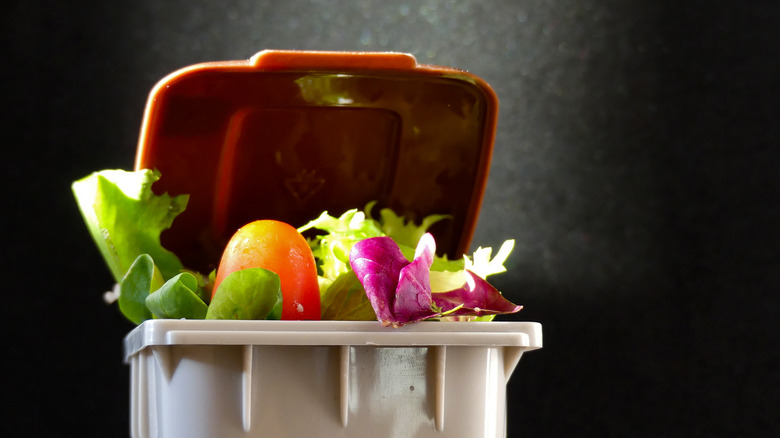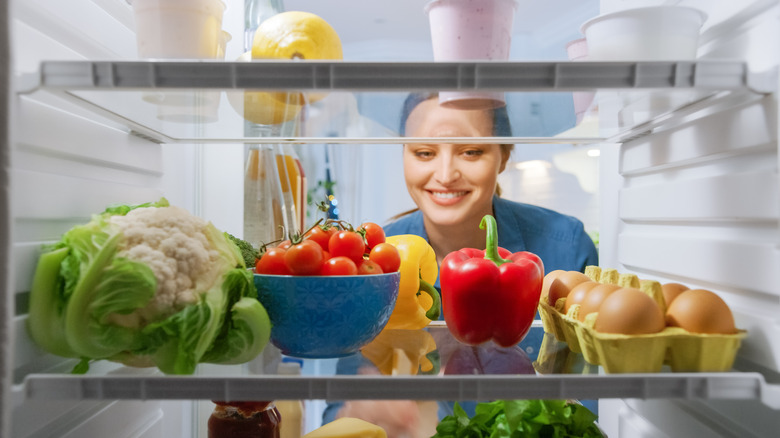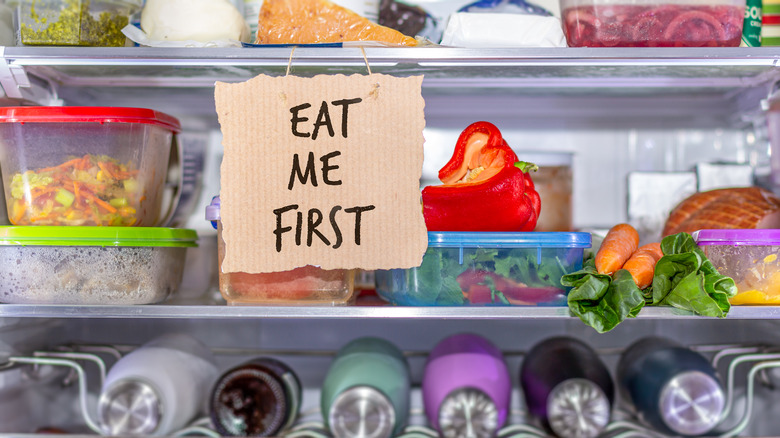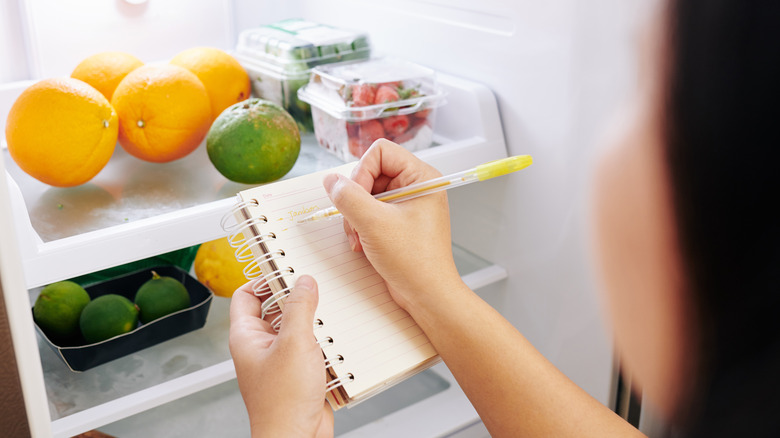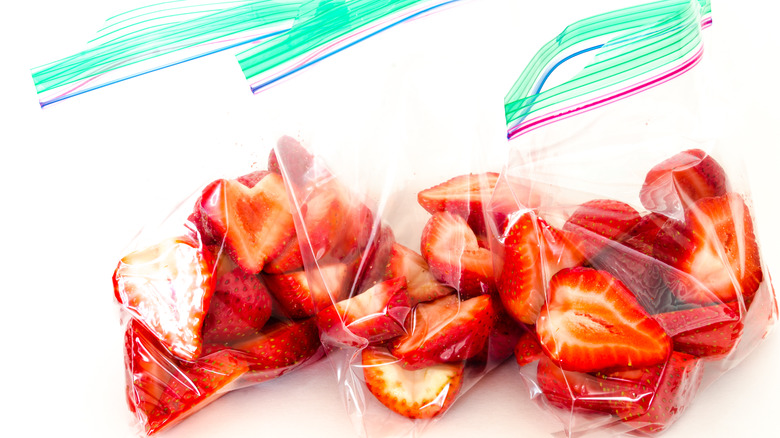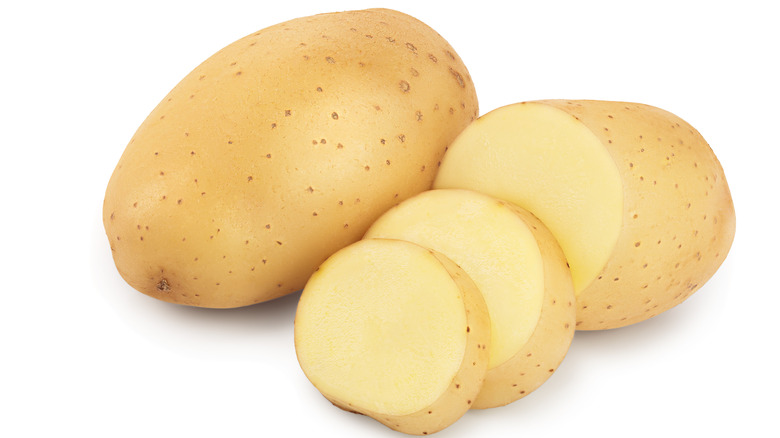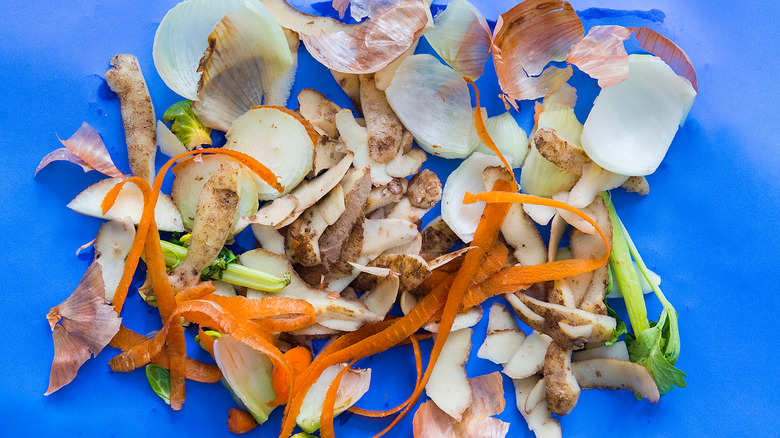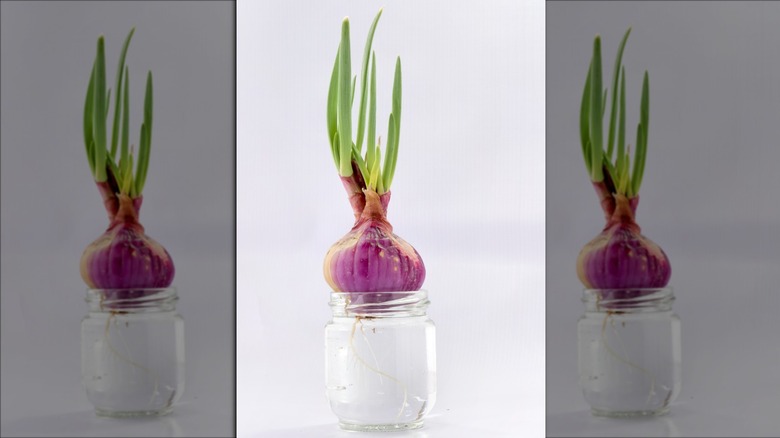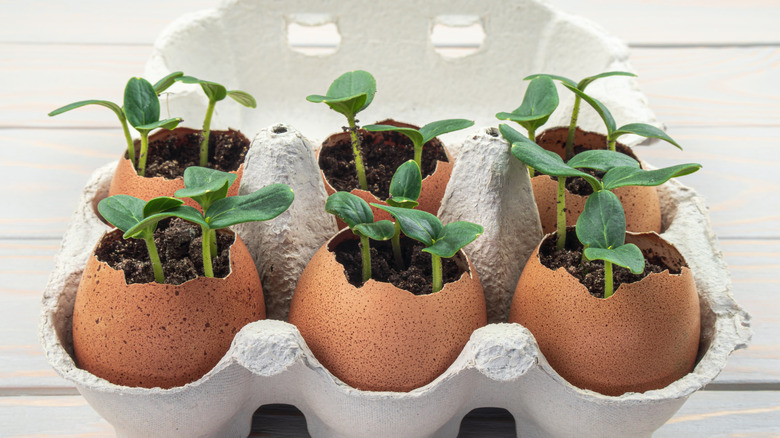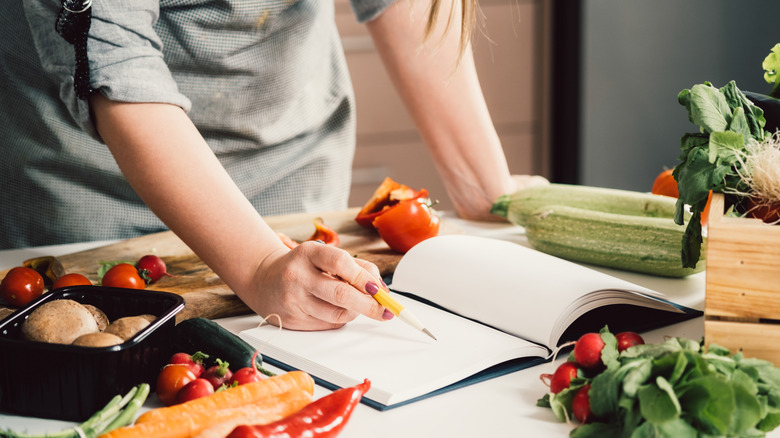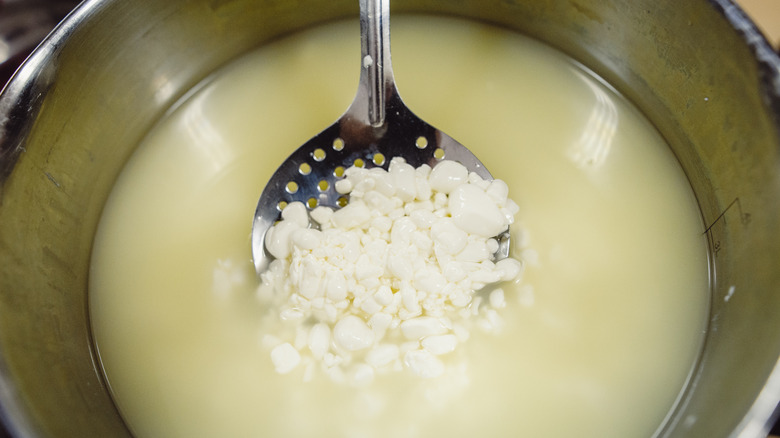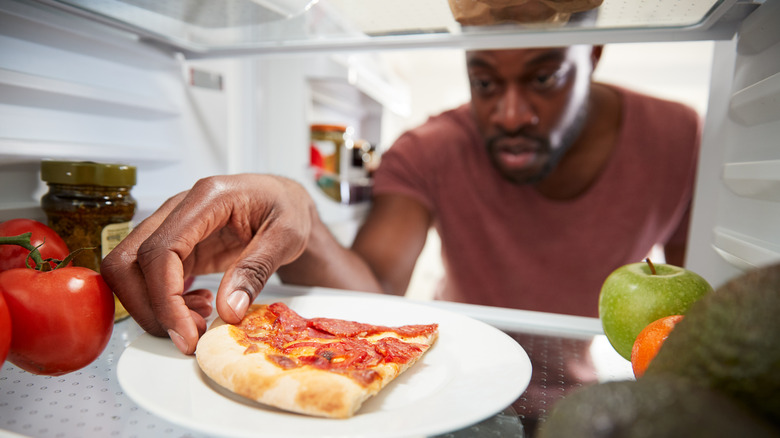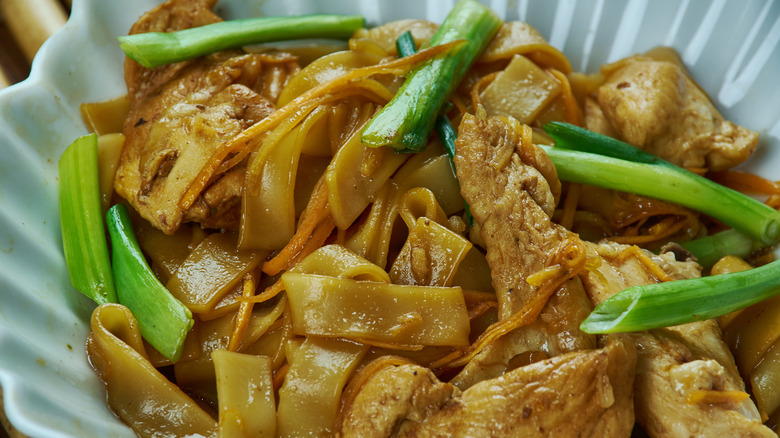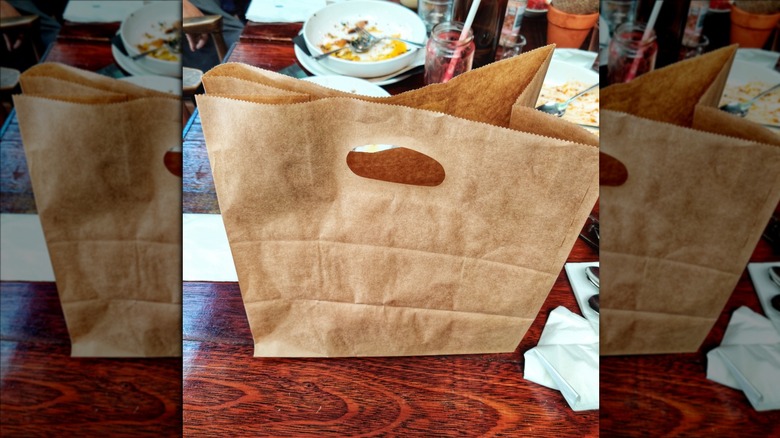15 Tips For Helping Reduce Food Waste
One of the biggest problems affecting the entire planet today is world hunger. The Food Aid Foundation says that one in nine people throughout the world does not get enough to eat on a daily basis, while one-third of the globe's population is affected by malnutrition to some extent. It is tragically ironic, then, to realize that a ridiculous amount of food is going to waste. The UN Environmental Programme reports that 17% of all the food produced in the world is wasted, and the bulk of this waste — 61% — takes place at the individual household level. Statistics compiled by Compare Camp suggest that the problem could be even more severe, with up to one-third of the world's food supply being wasted, a figure the USDA also says is the percentage of food being wasted just in the United States.
Chefs including José Andrés and Andrew Zimmern have spoken out against food waste, while companies such as DoorDash have taken steps to curb the problem within their organizations. A number of states — 18 as of 2021, according to the Pew Charitable Trusts – are attempting to legislate solutions to the food waste problem. When it comes to really tackling this global crisis, though, it's going to take effort from all of us. Food waste begins in your very own fridge, and that's where you need to go to prevent it, as well.
1. Organize your fridge
The first thing you need to do in order to cut down on food waste in your own household is to find out exactly what is lurking in the back of your fridge — and in the front, and on the sides, and buried deep in the produce bins. Take it all out, one shelf or bin at a time. Yes, you are likely to find some food that has already gone to waste and cannot be repurposed in any way, not even in the compost bin. While composting is a great way to take care of certain types of kitchen scraps, Better Homes and Gardens notes that meat, fish, and dairy products don't belong there, as they may attract rats or other opportunistic scavengers. Sorry, but there's nothing you can do with that moldy cheese but toss it out and vow to do better next time.
In order to make this vow something more than another empty promise, you'll need to get that fridge organized, which is why our first step of taking everything out is so vital to the process. Orgain says to use the top shelves for foods that don't need cooking, but to save the colder lower shelves for produce and meats. The fridge door storage area is the warmest part of the fridge, so it should be saved for condiments. They also suggest separating your fruits and veggies, should your fridge have two produce bins, as this can help both to stay fresh.
2. Labels are your friend
While you're rooting around in your fridge, you may be unpleasantly surprised by a few UFOs — in this case, these would be Unidentified Food Objects, and are most likely former leftovers-turned-science experiments. Needless to say, straight into the trash they go! But you know what could have prevented this crime against food in the first place? Labeling the containers!
All you need to do is to get a pen and a sheet of stick-on labels, or maybe some post-it notes, and write a short note to yourself along the lines of "pork lo mein," plus maybe add a date so you'll know how long it's been there. Most leftovers really don't last all that long, so move these up to the front, as well, as a reminder that you need to eat them ASAP. Nature Fresh Farms notes that labels are also very useful should you live with other people, as you can use prominently displayed labels to remind them of what foods need to be eaten first. In such an event, it is perfectly permissible to use all caps.
3. Make a game plan before you shop
Once you've organized your fridge, the next step towards making sure food waste never happens in your house again is to straighten out your shopping habits. Before you do a grocery run, check what you already have on hand, what needs using up, and what might spark some ideas. Look in the pantry as well as the fridge. While shelf-stable foods are less likely to go bad if you don't put them to use right away, if you've got pounds of pasta or half a dozen cans of kidney beans on hand, you might want to start thinking of ways you can use them up. (Suggestion: Cincinnati Five-Way chili would give you a two-fer here!)
As you do your kitchen walk-through, start making your shopping list. As Stop Food Waste points out, planning ahead is key to making sure the food you buy gets put to good use, and they say you should be sure to buy only as much perishable food as you think you're likely to use up before your next shopping trip. You may also want to include a "notes" section on your list, so you can remind yourself of what you've got at home, as well as any ideas you may have. A few examples would be "slightly overripe pineapple — pork stir fry?" or "leftover birthday cake — ice cream for cake shakes."
4. Prep your food when you get it home
Once you get your food home from the store, you obviously need to get it stowed away ASAP. Leaving a carton of ice cream on the counter to melt or letting the chicken sit out until the cat grabs it are particularly egregious examples of food waste, after all. You could take a few more minutes to prep your food as you put it away, though, as the Environmental Protection Agency suggests this could save you some effort in days to come, as well as increasing the likelihood that you'll actually use your food before it goes bad.
With your produce, you can wash it, peel it if needed, chop it, and store it in (labeled) containers for easy snacking or cooking. If you've bought a package of meat that is larger than you can eat in one meal, divide it into smaller portions, place these portions in resealable storage bags or containers (again, don't forget to label!), and freeze whatever you aren't going to be cooking within the next 24 hours or so. If you really want to make sure your food is ready to eat when you are, you can also cook it right away, then freeze the cooked food. That way, it will last a long, long time and all you'll need to do is zap your meal in the microwave when you want to eat it.
5. Not all produce needs to be peeled
One way we're wasting not only food but also time and effort is by peeling all of our fruits and veggies. Yes, some things definitely do need to be peeled — ever try to bite into a pineapple with the skin still on? (Even a pineapple skin can be repurposed, though, if you've got the patience to ferment your own tepache.) There's quite a bit of produce, however, which is just as tasty, and quite a bit healthier to boot, if you'll just spare its peelings.
As per The Washington Post, most root vegetables really don't need to be peeled: not potatoes, not beets, and not even carrots. Squash also does not need to be peeled, and neither do cucumbers. The peels, if left on, will soften with sufficient cooking or, in the case of pickled cukes, brining. They also add plenty of fiber, something we could probably all use more of in our diets, and there may be nutrients just below the skin that you'd be removing and tossing in the trash along with the peels. What's more, if you're someone who likes to photograph your food before you eat it, you may appreciate that added color pop provided by leaving the peels on your produce.
6. You'd be surprised what can be used in soup stock
One of the best things you can do with your leftover vegetable bits — root and stem ends, cores, cobs, and peelings from vegetables that do need their outer coatings removed (onions and garlic come to mind) – is to throw them all in a resealable storage bag and keep them in the freezer for future soup-making purposes. This also works for meat byproducts, as well: both cooked and raw bones, skins, fat, shrimp tails ... into the bag with them! Cheese rinds work great, too. One caveat, though: the vegetables can be wilted, but should not have reached the point of moldiness, and meat and dairy scraps should be without any trace of spoilage.
Food Waste Feast advises saving these scraps until you've got enough to fill up a stock pot about halfway. Add water, bring to a boil, then simmer for a few hours until you've got a flavorful meat and/or veggie stock. Strain out the solids — the produce can be composted, but the bones and other meat bits will need to go into the trash. Season the stock to taste, then store it in the fridge for up to a week while you use it in soups or stews or for cooking rice or other grains. You can also freeze this stock and keep it for as long as you like, or at least until you need the freezer space to store more scraps.
7. You can also re-grow certain veggie scraps
Want to teach the kids — or yourself — about the miracle of life? No need to get into some complicated (and possibly illegal) ordeal of trying to raise backyard chickens. Instead, you can try the coolest science experiment ever: regrowing new veggies from old ones! Yes, it seems there are certain types of produce that have the ability to regrow their own severed bits. It's kind of like lizards and their tails, only a lot less wiggly and much more appetizing. As per the Farmer's Almanac, there are over a dozen different veggies with the amazing ability to regenerate themselves, including basil, beets, carrots, celery, cilantro, garlic, ginger, onions (regular and green), pineapple, parsnips, potatoes (white and sweet), romaine lettuce, and turnips.
The methods for regrowing vegetable scraps vary by type, as well as what part of the vegetable you're saving. With herbs, you're placing sprigs in water and waiting for roots to form before replanting. With green onions, if you place the whites in a water glass, the green tops will re-sprout. Romaine lettuce re-grows from the root end, although you're likely only to get a few small leaves on your reborn lettuce. With pineapple, things get a little complicated, since realistically it's likely to take years (and some serious climate control) before you have anything edible. Still, you've turned what could have been trash into a fun project, even if your homegrown pineapple never does materialize.
8. Some food waste products can be re-used for non-edible purposes
While composting may be the best-known way to make use of food waste, there are numerous other things you can do to keep shells, peels, and other cooking byproducts out of your garbage. For example, did you know you could utilize your used coffee grounds as plant fertilizer? They also make for a pretty good pesticide, too, and can be used to neutralize odors in your fridge, in your shoes, on your hands ... pretty much anywhere that needs de-stinking. You can even use coffee grounds in DIY beauty products such as skin scrubs.
Lemon peels also have an afterlife once you've squeezed them. The zest can be used for cooking, while the peels, pith and all, can be re-purposed as air fresheners, homemade cleaning products, and skin softeners. Eggshells are chock full of free calcium — grind them up and use them as a supplement for pets and people, too. They also make super-cute seed starters, and of course you can blow the innards out of raw eggs and paint the hollowed-out shells for Easter decorations.
9. Choose (and tweak) your recipes wisely
When you are looking up recipes, always keep in mind which ones are likely to be less wasteful. For example, if you are wet-brining a turkey, you may be dumping a bunch of spices and condiments into several gallons of water, only to be pouring them all down the sink once the brining is done. On the other hand, if you dry-brine your bird, none of the seasonings you use will be going to waste.
You can also choose recipes that will make best use of what you've already got in the fridge. If you have half a gallon of milk that you're not likely to drink before it goes bad, you could use it to make a milk-braised pork roast. If your tomatoes have gotten a bit soft for salad, they'll still be great in a BLT. Too Good to Go points out, too, that cooking recipes (as opposed to baking ones) generally offer plenty of wiggle room that will allow you to use up what you've got. Recipe calls for half an onion? Might as well toss the other half in, too, if there's any risk it would otherwise go uneaten in the fridge.
10. Sour milk can be used in baking and cheesemaking
Got milk that's just starting to go sour? While you may not want to pour it on your cereal or use it in your coffee, don't just pour it down the sink! Slightly sour milk is great in baking and cooking, and makes a great excuse for whipping up a batch of waffles or pancakes.
Yet another thing you can do with sour milk is something that might sound like it would be difficult: making cheese. Yes, if you're envisioning creating your own artisanal cheddar, that may well require a lot of work and some specialized equipment. What you can do, however, with little more than milk, a pot, and a splash of vinegar or lemon juice, is to make your own homemade ricotta, paneer, or queso fresco. According to Food 52, the process isn't difficult at all. The milk basically separates out into curds, which become the cheese, and whey, which you can use for making bread, cooking grains or beans, or adding to soups, stews, and smoothies.
11. Learn to love leftovers
"Leftovers" is a word with an unfairly negative connotation. It's like, this food just wasn't good enough to be eaten on the first day. Ha! In some cases, nothing could be further from the truth. Sometimes a dish is delicious, but large, and/or a household is small. If you live alone, there's no reason to deny yourself the pleasure of homemade lasagna, but there's little chance you'll eat it all on one day.
Some types of food, like the aforementioned lasagna, are perfect just the way they are, on Days 1, 2, and 3. OnePoll (via StudyFinds) surveyed 2,000 people about their favorite leftovers, and found that the top items — soup and pizza — are also things that need very little tweaking apart from some reheating. (Or not, in the case of pizza, which is also pretty great when it's cold.). Other leftovers, however, including such items as roast meats and cooked veggies, can be used to create entirely new dishes that will breathe new life into last night's dinner.
12. Have a few go-to re-purposing recipes
It's always good to have a few recipes in your back pocket that will allow you to make best use of leftover foods. Got cold french fries or a baked potato? Cut them up and fry them in a skillet with a little oil or bacon grease, then top them with fried eggs, bacon, and cheese for an amazing breakfast skillet. Got leftover ribs? Toss them in the slow cooker with some barbecue sauce, simmer until the meat falls off the bone, and voilà! Pulled pork. (Or beef. Still delicious.)
Too Good to Go says that stir fries, rice bowls, frittatas, and quesadillas are great ways to use up any random amounts of leftover meats and veggies you may have in the fridge. They also suggest that leftovers can be stirred into mac and cheese to help perk up an otherwise bland dish. Savannah Now also offers a helpful suggestion, saying that leftover fried shrimp, a dish that can never again achieve its original crispiness, can be put to good use in tacos. We see no reason this couldn't work for fried fish, as well. And should you be lucky enough to find yourself in possession of leftover roast chicken, whether it be the Costco rotisserie kind or home-cooked, why, there's simply no end to what you can do with this Queen of Leftovers!
13. Take care when ordering takeout
If you find yourself regularly ordering takeout or delivery, you might want to put a little thought into your next order so you can choose foods that will not only survive the journey to your house, but will also hold up well in the fridge should you be unable to eat it as soon as it arrives. Food that you're not going to enjoy is food that you're far more likely to waste, after all. Savannah Now suggests that you steer clear of fried foods, as they tend to arrive in a soggy state. Foods that come au gratin are also not a great bet for takeout, as that "gratin" won't be so great by the time it gets to you.
You may be able to get away with stir-fries and other lightly-cooked foods, but more delicate proteins and veggies may not stand up well to reheating, so best plan to eat them ASAP. Sandwiches, on the other hand, are plenty sturdy, though cold sandwiches tend to be more forgiving (and make better leftovers) than hot sandwiches including burgers. With sandwiches, as with salads, it's also best to ask for any sauces or dressings on the side.
14. There's no shame in taking your restaurant leftovers home with you
Once upon a time, there seemed to be a real stigma attached to asking to take your restaurant leftovers home with you, at least if the name of the container was any indicator. It used to be, if you wanted to hang on to the uneaten portion of your meal, you'd have to ask for a "doggy bag," with the implication that you only wanted the food to feed to an unfussy pet. According to some Redditors, however, this phrase seems to have died out sometime in the 90s or early 00s, and now we're more likely to use the term "to-go box," with no need for any pet-related subterfuge.
The Guardian points out, though, that there are still those who feel a sense of shame in asking to take their leftovers home with them. While this may be more of an issue in Europe than in the U.S., they emphasize that no one anywhere should feel any embarrassment whatsoever about asking to hang on to their leftovers. There is nothing the restaurant can (or should!) do with them apart from tossing them, whereas once they are in your hands, you can make use of them as you see fit. You can even share them with your canine companion, as long as the foods are safe for dogs to eat.
15. Don't freak out over expiration dates
One of the unsung villains of the food waste saga is the expiration date. Sure, these are meant to keep us safe, or at least protect food manufacturers from liability, but in many cases we've reached the point where people put too much faith in food expiration dates and see them as absolute rules than cannot be broken under penalty of death or serious illness. Umm, not quite true. Many types of shelf-stable goods will last for a while after their expiration date is up, and this is also true for dairy products. As long as the food looks/smells/tastes fresh, it may still be edible.
Meat products, however, do tend to spoil quickly unless you freeze them. Once frozen, though, they should be good, as Almanac says expiration dates for frozen foods are more about quality. Food may become less flavorful after an extended time in the freezer, but it probably won't make you sick. In fact, History Things notes that scientists in the 1980s consumed meat from a bison that had been frozen in an Alaskan glacier for over 35,000 years. The bison soup they made was reportedly fairly tasty, too. More to the point, none of them became ill or died from the experience. Moral of this story: If food has been in your freezer for anything less than an eon or so, there may be no need to toss it.
